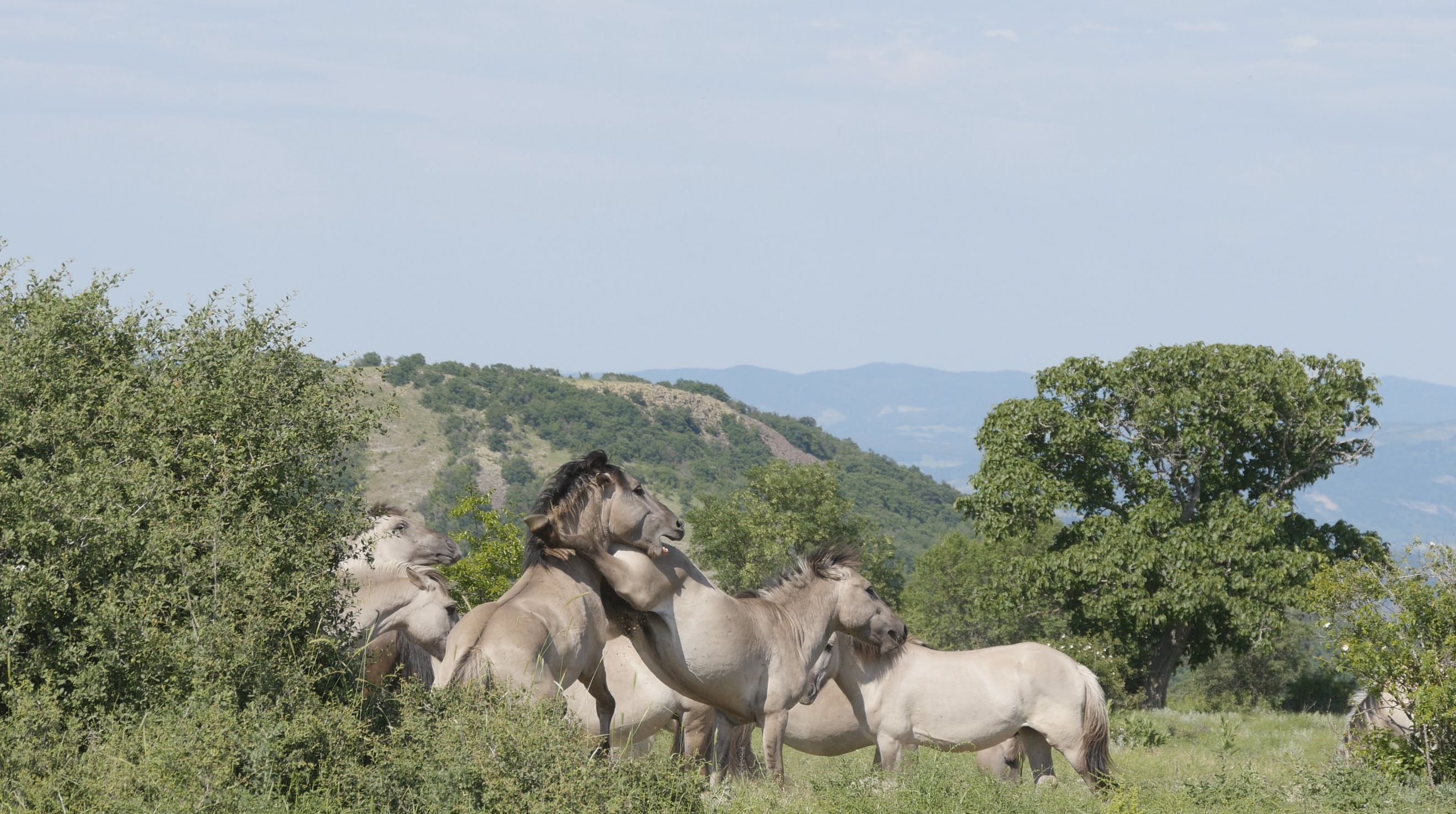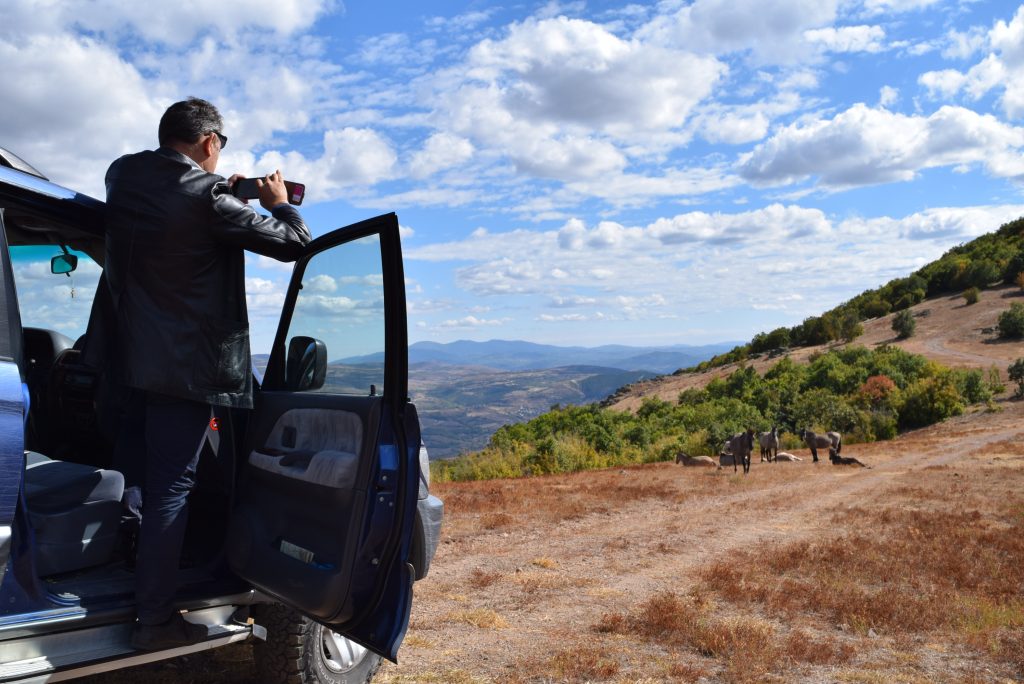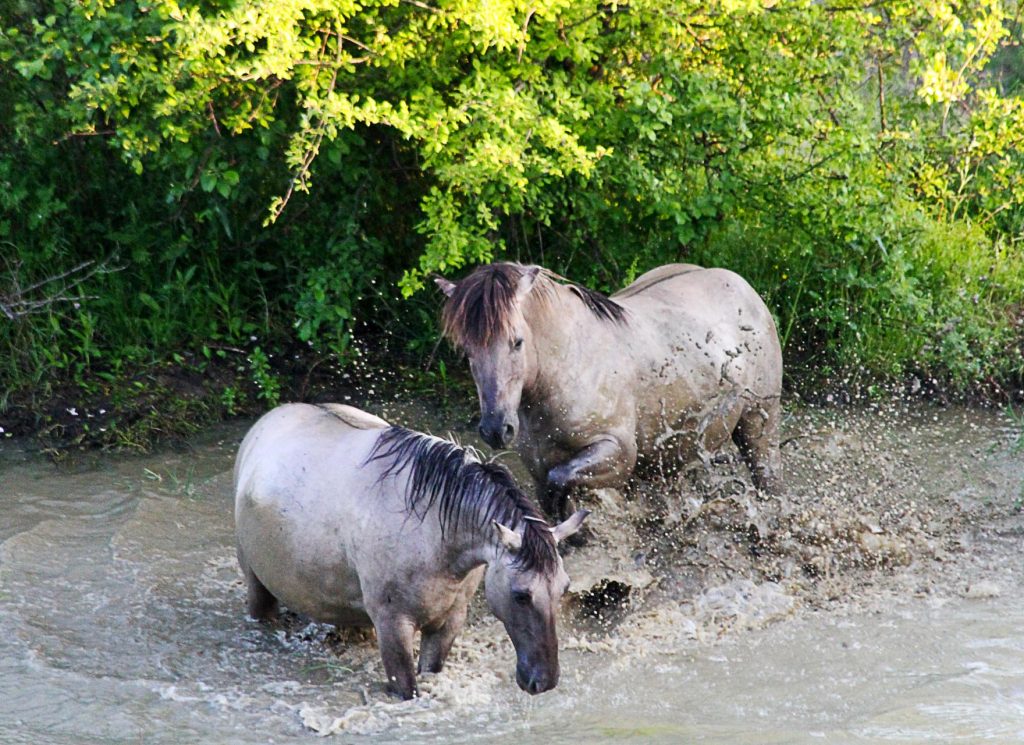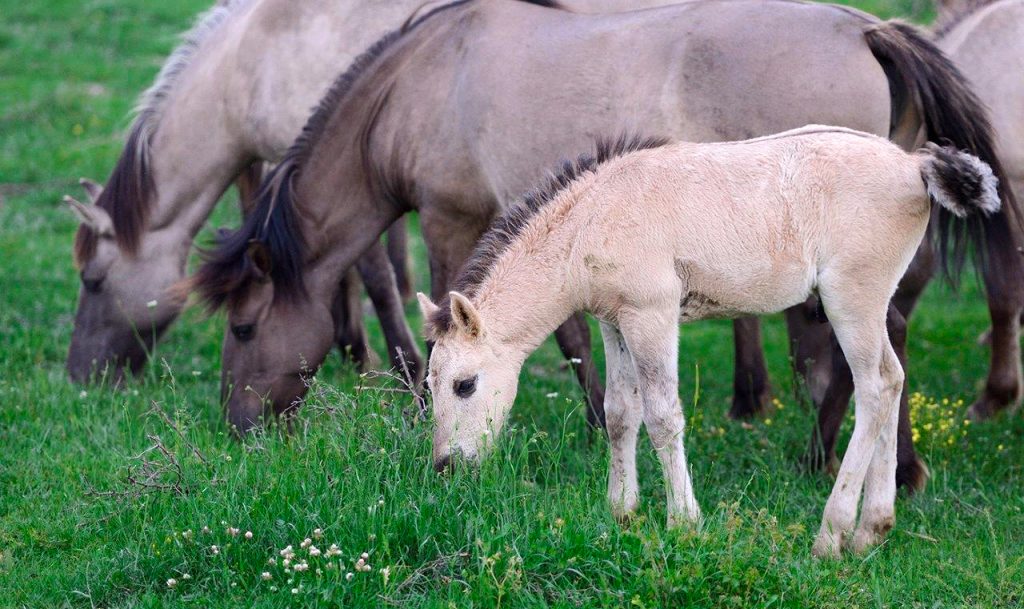First 12 Koniks (wild horses) arrived today in Bulgaria from the Netherlands. They are planned to be reintroduced first time in Bulgaria in the region of the Eastern Rhodopes. This unique introduction is part of the wilderness restoration activities of the Bulgarian-Dutch project for the sustainable development of the Eastern Rhodopes, the “New Thracian Gold” (NTG).
The Koniks will live in the area of Sbor, Municipality of Krumovgrad. Those horses imported from the Netherlands and are the offspring of a free living population. In the first year of the Bulgarian experiment wildlife experts will keep the horses fenced for appropriate habituation to the Rhodopian wilderness. When the horses are accustomed to Bulgarian nature, they shall be released to the wild. Their role in Eastern Rhodopi nature will be the same as in ancient times: to graze the wild vegetation, to mold the wilderness and to support a natural ecosystem. Wild Koniks have a reputation of being tough and easily adapted to the harsh conditions of semi-open wilderness landscapes.
The Koniks are a restoration of the Tarpan (Equus ferus ferus), also known as Eurasian wild horse, which is an extinct subspecies of the wild horse. It is a prehistoric wild horse type that ranged from Southern France and Spain east to central Russia. There are cave drawings of what are considered to be Tarpans in France, Spain and Scandinavia, as well as artefacts from southern Russia, where Scythian nomads domesticated a horse of this type around 3000 BC. Also in Bulgaria paleaontologistst found Tarpan bones, which is a proof that this wild horse once lived here. Tarpans got extinct in wild nature between 1875 and 1890, when the last known wild mare was accidentally killed in Russia during an attempt to capture it. The last captive Tarpan died in 1909 in a Russian zoo. Tarpan inhabited in the past Bulgaria then he was exterminated by the people.
Beginning in the 1930s, several attempts were initiated to re-create a look-a-like tarpan through selective breeding with domestic races which allegedly retained much Tarpan DNA in their genome. The look-a-like Tarpan that is going to be reintroduced in Bulgaria is also known as Konik (Polish for ‘little horse’). This breed originates from Polish tarpan re-creation projects. In 1936 Tadeuzs Vetulani was fascinated by the exterior resemblance of some specific primitive farmer’s horses and the extinct Tarpan. He started a breeding program with 35 such horses from an area where a century earlier the last Tarpans were captured in the wild and distributed to farmers. In some countries – like in the Netherlands – this Polish Konik has been reintroduced to nature parks very successfully some thirty years ago.
Tarpans are robust horses with very well developed social behaviour. A social herd of horses is a very strong opponent towards predators (wolves). Such horse group is perfectly capable of protecting their foals, according to the experts. Towards humans Tarpans expose their quiet, inquisitive and well-intentioned character. The total number of Tarpans in the world at this moment is around 4000, almost half of them are in the Netherlands. In 2010, 21 Dutch Tarpans were reintroduced to Latvian nature. In previous years Tarpans from Holland also recolonised English, French, Belgian and German nature areas.
It is the ecologist’s opinion that the reintroduction of ancient herbivores in the wild improves the biodiversity and makes the ecosystems more complete. The nature component of the NTG project goes hand in hand with the tourism part. Free ranging wild horses are very rare in Europe and unique in Bulgaria. The combination of beautiful landscapes, rich biodiversity and wild Tarpan horses is a potential key factor in boosting eco-tourism as a new economic driver in the Eastern Rhodopes. Eco tourism helps to support the Eastern Rhodopes as a prosperous and attractive place to live and work.





